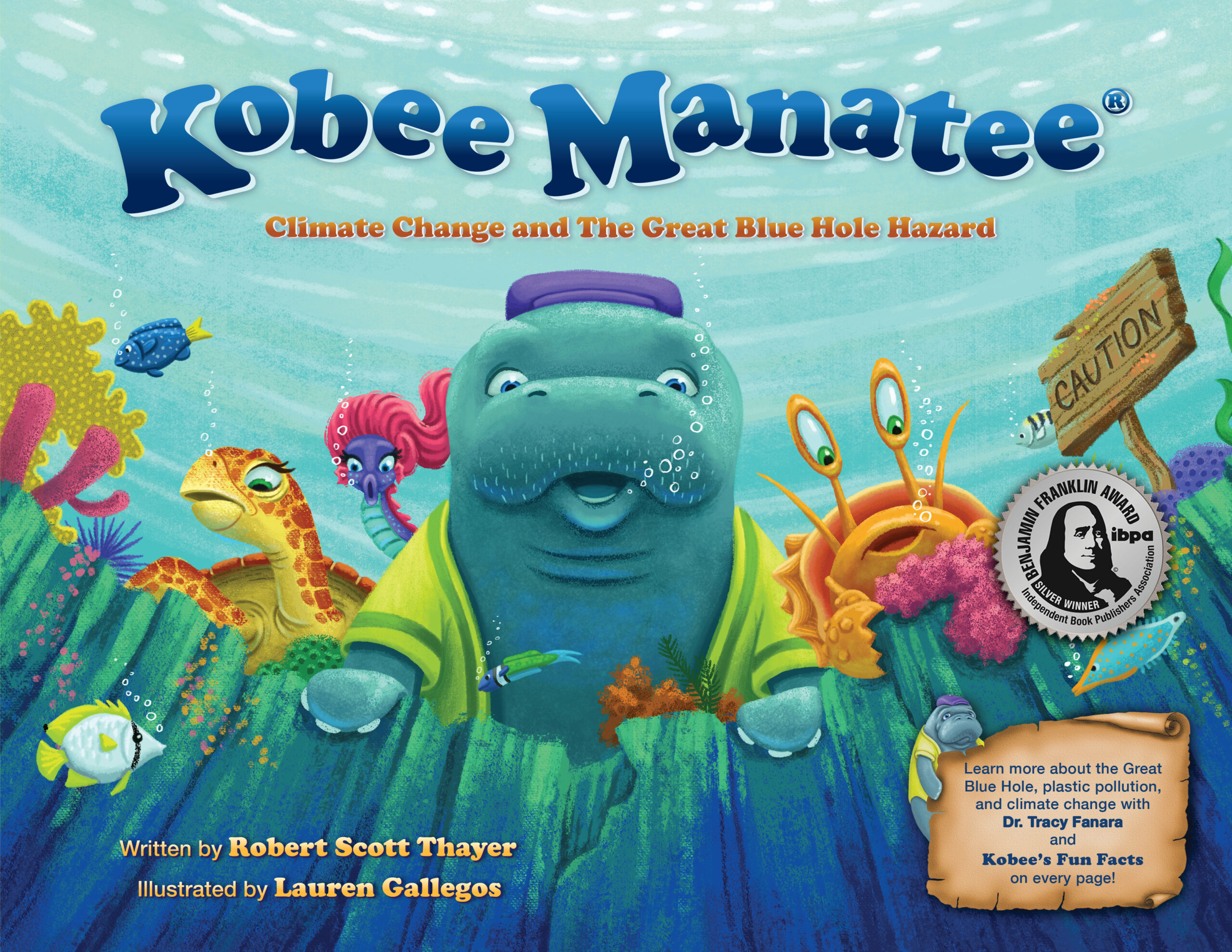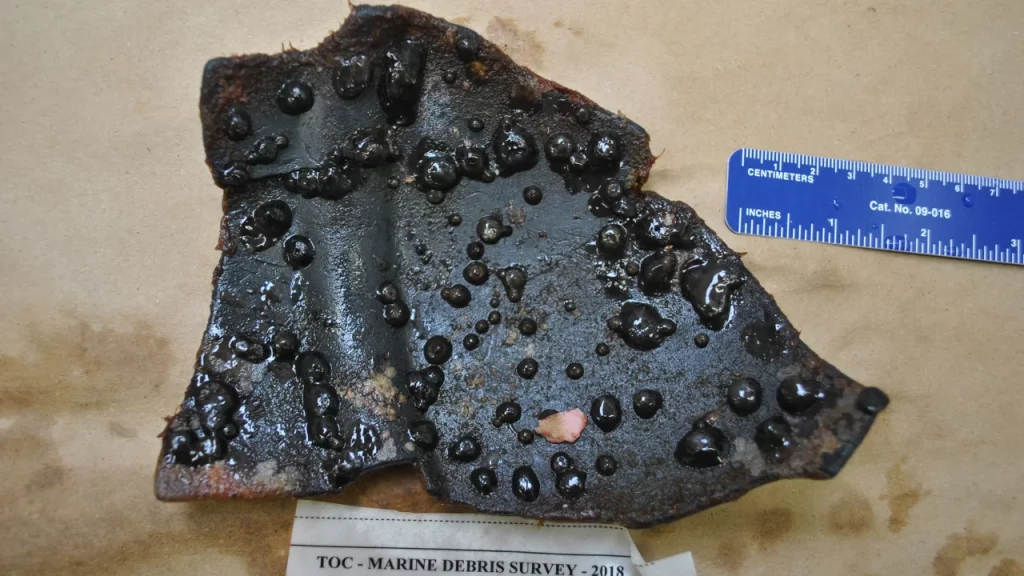A New Ecosystem is Thriving in the Great Pacific Garbage Patch!
Greetings! A blob of plastic pollution twice the size of Texas is alive and well in the Pacific Ocean. It’s called the Great Pacific Garbage Patch, which is a 620,000 square mile vortex of trash floating between California and Hawaii. And get this …
… “Scientists have found thriving communities of coastal creatures, including tiny crabs and anemones, living thousands of miles from their original home on its plastic debris.”
A new study published in the Nature Ecology & Evolution journal revealed, a team of researchers found “dozens of species of coastal invertebrate organisms which have been able to survive and reproduce on plastic garbage that’s been floating in the ocean for years.”
The scientists said that, “the findings suggest plastic pollution in the ocean might be enabling the creation of new floating ecosystems of species that are not normally able to survive in the open ocean.”
“Unlike organic material that decomposes and sinks within months or, at most, a few years, plastic debris can float in the oceans for a much longer time, giving creatures the opportunity to survive and reproduce in the open ocean for years.”
Linsey Haram, the lead author and a science fellow at the National Institute of Food and Agriculture explained, “It was surprising to see how frequent the coastal species were. They were on 70% of the debris that we found.”
The study revealed that “Haram and her colleagues examined 105 items of plastic fished out of the Great Pacific Garbage Patch between November 2018 and January 2019. They identified 484 marine invertebrate organisms on the debris, accounting for 46 different species, of which 80% were normally found in coastal habitats.”
“Quite a large percentage of the diversity that we found were coastal species and not the native pelagic open ocean species that we were largely expecting to find.” Haram said. She continued and said, “On two thirds of the debris, we found both communities together … competing for space, but very likely interacting in other ways.”
Haram said that “the consequences of the introduction of new species into the remote areas of the ocean are not yet fully understood.”
“There’s likely competition for space, because space is at a premium in the open ocean, there’s likely competition for food resources – but they may also be eating each other. It’s hard to know exactly what’s going on, but we have seen evidence of some of the coastal anemones eating open ocean species, so we know there is some predation going on between the two communities,” she said.
“How exactly the creatures get to the open ocean and how they survive there remains unclear. Whether, for example, they were just hitching a ride on a piece of plastic they attached themselves to by the coast, or whether they were able to colonize new objects once they were in the open ocean, is unknown.”
The patch is bounded by an enormous gyre –the biggest of five huge, spinning circular currents in the world’s oceans that pull trash towards the center and trap it there, creating a garbage vortex.
The result of this blog? You can take action … Please recycle!
Here’s an Excellent Way to Talk to Kids with “Soft Facts” about Plastic Pollution and Climate Change
One awesome tool for talking to kids about climate change is to read my fourth installment in the award-winning Kobee Manatee® Children’s Educational Picture Book series. It’s titled, Kobee Manatee® Climate Change and The Great Blue Hole Hazard. It contains “soft facts” about climate change and plastic pollution in our oceans.

When you read this award-winning educational picture book to children, it’s a fun and fictional adventure loaded with weaved in “soft facts” on climate change and plastic pollution. This quickly helps children learn about this serious subject in a fun and entertaining way. Here’s a brief synopsis …
Kobee Manatee, the protagonist and his seafaring pals, Tess the seahorse and Pablo the hermit crab swim from the Cayman Islands to Belize. Kobee wants to help his cousin Quinn clean up plastic litter at her new, all-veggie underwater bistro called Quinn’s Seagrass Café.
On their Caribbean journey they encounter harmful effects of climate change and plastic pollution. As if that wasn’t enough, several other unforeseen problems occur with a distressed loggerhead turtle, a giant Portuguese man-of-war, and a venomous scorpionfish. They’re all amazed when they discover the extraordinary Great Blue Hole. Then their adventure takes another crazy turn when Pablo plunges into its huge abyss!
Each page includes in-depth, scientific details on climate change and plastic pollution in our oceans with Dr. Tracy Fanara, NOAA Research Scientist (aka Inspector Planet). Tracy can be seen on The Weather Channel and CNN as a visiting expert.
We have Fantastic Reviews on this New Release!
“I read the book to my 6-year-old this morning while he was having his breakfast before school and he loved it! We talked about the characters, what it meant for the pollution to be in the oceans for all the sea creatures, and how fun the story was. Thank you so much for writing such a great story for kids that is not only entertaining, but has a message!” – Jessica Vilchis, Co-Host KNBC California Live
“A well-crafted, thoughtful, and well-illustrated addition to a noteworthy educational book series.” —Kirkus Reviews
“Robert Scott Thayer presents an important environmental message in an engaging story with wonderful characters. Anyone who loves the ocean and wants to help save it should read Kobee Manatee: Climate Change and The Great Blue Hole Hazard. I’m looking forward to the next Kobee Manatee adventure.” —Readers’ Favorite
For young readers who enjoy imaginative tales surrounding affable and heroic sea creatures, as well as parents and/or teachers looking for a way to introduce youngsters to the importance of marine conservation, Kobee Manatee® Climate Change and The Great Blue Hole Hazard offers a perfect blend. Highly recommended! – Chanticleer Book Reviews
Keep watching for more of my updates on climate change!
If you see any sick or injured manatees, please call the Florida Fish and Wildlife Conservation Commission at: 1-888-404-3922 (FWCC). They are the folks who are responsible for rescuing us in Florida.
Here’s the Save the Manatee Club link to learn more about us manatees …
Here’s a cool link for you to learn more about how we’re rescued and brought into rehabilitation …
~ Robert Scott Thayer
Related Posts
Rising Tides Threaten to Banish Millions
Climate Change Doomsday Glacier Could Cause 6 Foot Sea Level Rise!
NASA Report Predicts 1 Foot Sea Level Rise by 2050!
Dr. Tracy Fanara aka Inspector Planet Uncovers Extraordinary Science Nuggets!
A National Geographic’s Top 20 Must-See Haven Sinking into Rising Waters of Climate Change!
